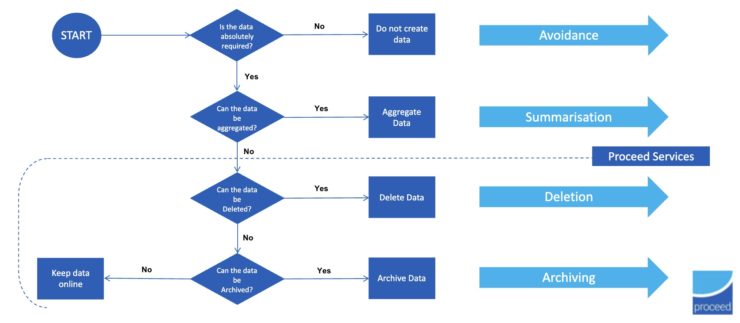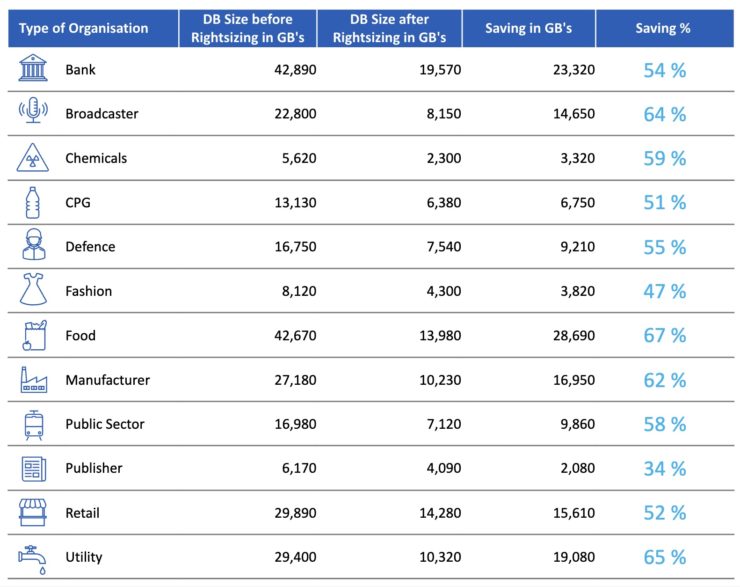
Robert Reuben
When I spoke at the UK&I SAP User Group’s Data and Analytics Symposium, my message was simple. Before you set off towards RISE with SAP, make sure the ground beneath your feet is stable. Good data management is that ground. Over the past 22 years, and more than 950 customer projects, we have learnt that a clear retention strategy, rightsized systems and consolidation of legacy systems are what let transformation run on time and on budget. Here, I’d like to share some practical advice, based on our real-world experience, to help speed up migrations and reduce costs.
The cheapest byte to store is the one you never create. The second cheapest is the one you can aggregate, delete or archive once it has served its purpose.

A straightforward decision tree keeps this honest: is the information absolutely required? If not, can it be summarised, removed or sent to an archive so that production systems stay lean?
Thinking retention first has three advantages. It protects compliance by applying rules up‑front, it frees valuable primary storage and it avoids the hidden cost of carrying data nobody uses.
Rightsizing is critical when databases move from disk into memory. SAP archiving regularly cuts database size by more than fifty per cent . We have seen the difference this makes. Croda International, for example, reduced its ECC database from 3.4 TB to under half a terabyte in fewer than three months, recovering 2.9 TB of space and achieving an ROI inside two years . Across other industries the picture is similar: banks, utilities and manufacturers have each trimmed between fifty and sixty‑plus per cent of live data .

The benefit is not just licence or infrastructure cost. Smaller, cleaner systems migrate faster, test cycles shorten and your people spend less time firefighting performance issues.
Documents, images and rich media usually live outside the database but still exert an infrastructure and operational drag. Rationalising content servers and placing files on the right tier of storage cuts maintenance spend and makes daily processes easier for users. Customers who moved through our content server migration programme reported lower running costs and better productivity after workflows were streamlined .
Once you shift to S/4HANA, or after a merger, the temptation is to leave old systems running for the occasional audit query. That approach ties up licences, hardware, electricity and skills. We recommend decommissioning the application while preserving legacy data in an environment designed precisely for that purpose. SAP ILM with Retention Warehouse is one option, our own Proceed Cella provides another, packaging extraction, secure storage and user‑friendly reporting in a single solution.
The economics are persuasive. Chemicals group Nouryon extracted 1.6 TB of information in twelve days, then switched off the legacy system. Some customers can cut total cost of ownership by up to eighty per cent.
Archiving projects succeed when IT and the business solve the problem together. Hold early workshops to confirm what data is in scope, how long it must be kept and which reports end users will still need. Secure time for user acceptance testing and, crucially, make sure the financial case aligns with the chief financial officer’s criteria .
When business owners understand the objective, they back the work and front‑line adoption is far smoother.
If you are planning a RISE with SAP migration, start by understanding the data landscape. Our quick assessment will allow us to size a live archiving or legacy system project, and we offer that analysis free of charge.
Whether you engage with us or pursue the task internally, the key is to measure, model and act before timelines tighten!

Free SAP data archiving report
Proceed Group’s free SAP data archiving report analyses your ECC or S/4HANA data in minutes and pinpoints savings, performance boosts and compliance gaps before you migrate to RISE or the cloud.
Read more

SAP ECC archiving – Customer story
To keep SAP ECC and operations running smoothly, a global food business archived 14TB of legacy data and moved attachments to a content server. The result was a leaner 11TB database and a stronger foundation for future growth.
Read more

SAP decommissioning and its role in modern IT strategy
Stopping legacy SAP systems is easier said than done. This article shows why SAP decommissioning deserves a place in every transformation roadmap, what a successful project looks like and how to secure buy-in from finance, IT and compliance teams.
Read more
© Copyright 2025 Proceed Group | Website by Union 10 Design